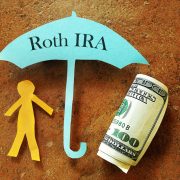A Self-Directed IRA After Retirement Age: What You Need to Know
Many people think about retirement investing from the perspective of the young to mid-level investor. After all, math alone tells us that most of us, by numbers, will belong to one of those groups. But since a Self-Directed IRA’s goal is to create a great lifestyle in retirement, it is easy to lose sight of the fact that all of this work is all about what happens after you turn those key ages—59 ½, 72, and any other age that might become your personal retirement age.
There are, after all, some rules that apply to these specific ages that every retirement investor should know. That is why it is important for you to understand these rules before you start investing. Doing so will help you prepare for the eventuality down the road: what happens when you actually hit retirement age.
Early Withdrawal Penalties
The first thing you should know is what happens if you were to take money out of a Self-Directed IRA—or any retirement account—before you hit retirement age. Congress imposed a 10% excise tax on early withdrawals from your retirement account before the age of 59 ½, which is why that it is important that you do not view a retirement account simply as another form of emergency savings account. An emergency fund is something that most investors keep in something more liquid so they can access it easily. Retirement accounts are just that—built specifically for retirement.
Hardship Distributions
Because Congress recognized that people would not save much money in retirement if they could not access it easily in a period of emergency, they did make some concessions for hardships. Medical bills, for example, would qualify as a “hardship” through which someone could avoid the 10% penalty on taking early distributions from retirement. For that reason, investors should feel safe and secure when they invest in retirement, because in the case of a true emergency, that money may still be available to them through hardship distributions.
Required Minimum Distributions
Now we get to what you should think about when you reach a more advanced age. Required Minimum Distributions are what Congress used to make sure that people do not simply use retirement funds to avoid paying taxes. RMDs come with accounts that include tax-deductible contributions, such as 401(k) accounts, because Congress did want to make sure that investors eventually did pay some tax on the money they put aside for retirement.
RMDs kick in on April 1st of the year after the year the Self-Directed IRA account owner turns 72. If you have a Self-Directed Roth IRA, you will not have to worry about RMDs, since you are already using taxable income to put money into these retirement accounts. Since the taxes are already paid on that money, the government is not looking to tax you in retirement age, at least on a Self-Directed Roth IRA.
What You Should Know About Retirement Age
Whether you are thinking about how-to take-out money before or after retirement age, there are clearly some subtleties to the different accounts that you will want to consider when you put money away for retirement. The different types of accounts are what you will want to consider here. One retirement account will differ from the next retirement account—potentially in vastly different ways. These differences are what you need to know. But keep in mind that when you self-direct your own retirement, you are in the driver’s seat. And it always helps to know the road ahead of you when you are the driver.
Interested in learning more about Self-Directed IRAs? Contact American IRA, LLC at 866-7500-IRA (472) for a free consultation. Download our free guides or visit us online at www.AmericanIRA.com.







